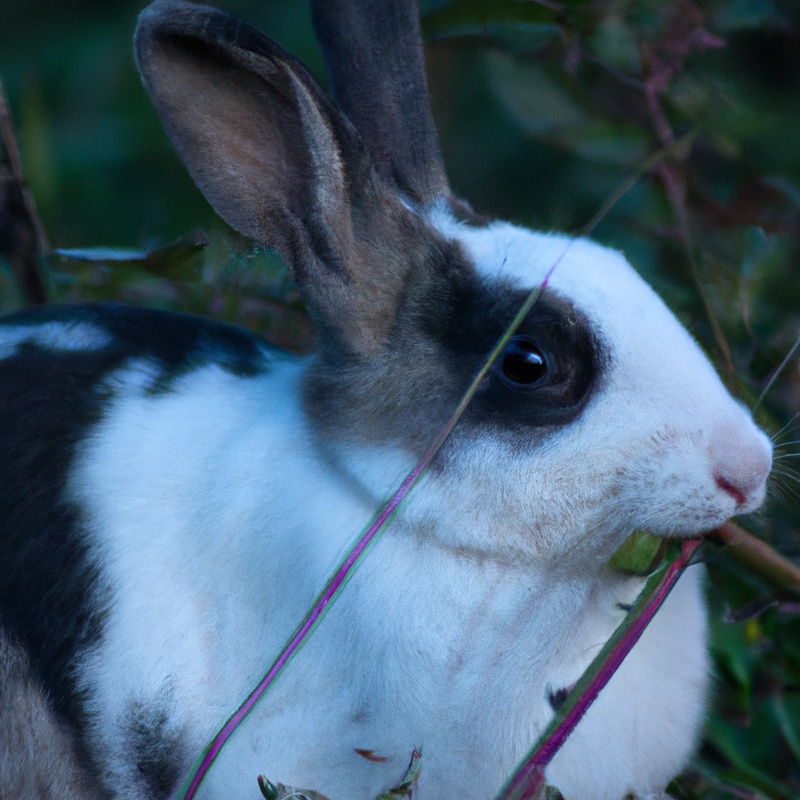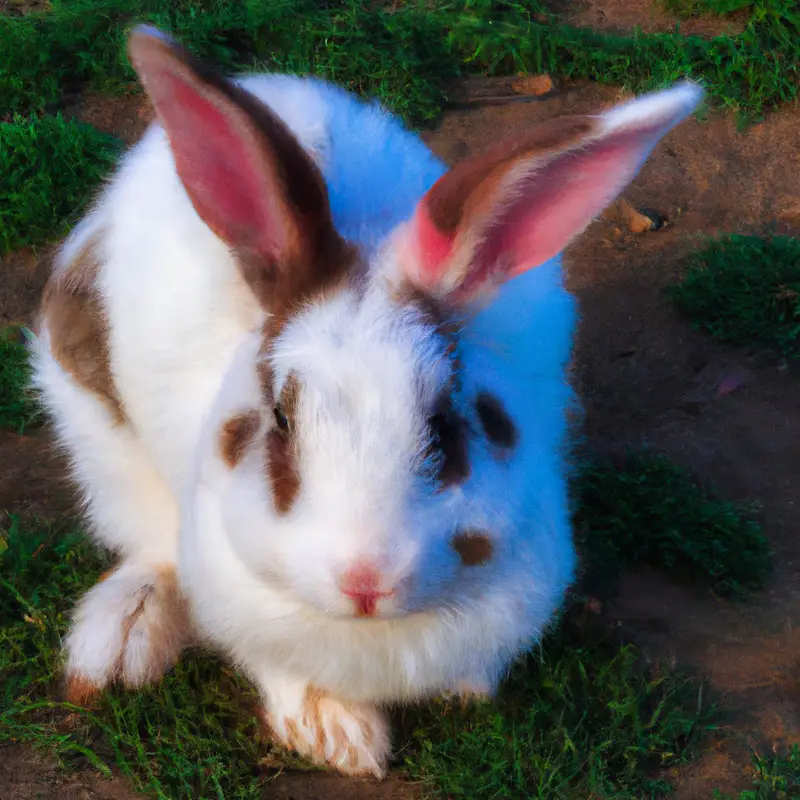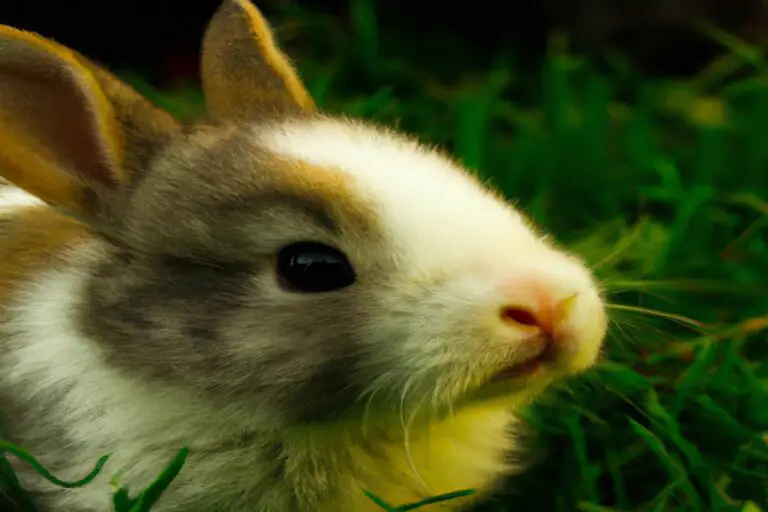Bunny Bonding: Introducing And Socializing Your Rabbits Successfully
Key Takeaways:
- Slow and gradual introductions are essential for successful bunny bonding.
- Providing plenty of space and neutral territory can help rabbits adjust to each other more easily.
- Bonding exercises and positive reinforcement techniques can strengthen the bond between rabbits.
- Patience and observation are key when socializing rabbits, as each pair has unique dynamics and timelines.
Are your bunnies longing for friendship and companionship? Look no further! In this article, we’ll delve into the captivating world of bunny bonding, unraveling the secrets to successfully introducing and socializing your rabbits.
From creating lifelong friendships to reducing stress and aggression, there are numerous benefits to bringing your bunnies together.
But it’s not just about playdates—understanding rabbit behavior, preparing the right environment, and following a step-by-step guide are crucial steps towards building a harmonious bond. So, get ready to hop into the wonderful world of bunny bonding and unlock the key to a happy and fulfilling bunny relationship!
| Steps | Description |
|---|---|
| 1 | Ensure that both rabbits are spayed or neutered to prevent aggression and unwanted pregnancies. |
| 2 | Choose a neutral location for introductions, such as a space that neither rabbit has marked as their territory. |
| 3 | Start with short supervised interactions, gradually increasing their time together. |
| 4 | Provide multiple food and water stations to prevent resource guarding. |
| 5 | Allow them to explore each other’s scent by swapping bedding or using a grooming brush between the rabbits. |
| 6 | Observe their body language for signs of stress or aggression and separate them if necessary. |
| 7 | Continue the bonding process until they can comfortably coexist without conflict. |
Benefits of Bunny Bonding
Bunny bonding offers lifelong friendships for your rabbits.
Creating Lifelong Friendships
Creating lifelong friendships between rabbits is a gentle and gradual process. Start by introducing the rabbits in a neutral space and allow them to explore each other’s scents.
Supervised playdates can help build trust and reduce potential conflicts.
Bonding can take time, so be patient and consistent in your efforts. Provide plenty of hiding spaces and separate feeding stations to prevent competition.
Gradually increase their time together and engaging in positive experiences like shared treats and grooming.
Observe their body language and intervene if necessary. Remember, every bond is unique, so allow them to form their own special connection.

Reducing Stress and Aggression
Reducing stress and aggression in rabbits is essential for a harmonious living environment.
Providing a spacious and secure living area with hiding spots can help reduce stress.
Regular socialization and playtime can also help rabbits bond and alleviate aggression.
Ensuring a balanced diet and providing mental stimulation through toys and games can further contribute to stress reduction.
Additionally, avoiding sudden changes in routine or environment can help minimize stress and aggression in rabbits.
Enhancing Mental Stimulation
Enhancing mental stimulation for your rabbits is essential for their overall well-being.
Here are a few ways you can achieve this:
- Provide a stimulating environment: Create an enriching living space for your rabbits by including tunnels, toys, and hiding spots. This will encourage exploration and keep them mentally engaged.
- Offer varied and nutritious food: Introduce a range of fresh vegetables, herbs, and high-quality hay to stimulate their taste buds and provide different textures. This will keep them interested in their meals and prevent boredom.
- Engage in interactive play: Spend time playing with your rabbits using toys that encourage physical activity and mental stimulation. Toys like puzzle feeders and treat-dispensers can keep them entertained while providing a mental challenge.
- Rotate toys and change their arrangement: To avoid monotony, regularly swap out toys and rearrange their living space. This will keep things interesting and prevent your rabbits from becoming too accustomed to their surroundings.
Remember, mental stimulation is an ongoing process, so be creative and observant to find what works best for your rabbits.
Encouraging Healthy Behaviors
Encouraging healthy behaviors in your rabbits is essential for their overall well-being.
Here are a few tips to help you promote good habits:
- Provide a balanced diet: Offer your rabbits a variety of fresh vegetables, hay, and high-quality pellets to ensure they receive all the necessary nutrients.
- Encourage exercise: Create a safe and spacious environment where your rabbits can hop and explore. Provide toys and tunnels to keep them active and engaged.
- Schedule regular vet check-ups: Regular veterinary visits are crucial for monitoring your rabbits’ health and catching any potential issues early on.
- Foster social interaction: Rabbits are social animals and thrive with companionship. Consider bonding them with a compatible bunny to promote mental stimulation and prevent loneliness.
- Maintain a clean living space: Regularly clean your rabbits’ habitat to prevent the buildup of bacteria or parasites. This will help keep them healthy and reduce the risk of illness.
Remember, by focusing on these healthy behaviors, you can ensure that your rabbits lead happy and fulfilling lives.
Understanding Rabbit Behavior
Understanding how rabbits behave is key to successfully bonding and socializing them with other rabbits or humans.
Identifying Dominant and Submissive Personalities
Identifying dominant and submissive personalities in rabbits can be observed through various behaviors. Dominant rabbits tend to display confident body language, such as standing tall, thumping their hind legs, and asserting themselves during interactions.
They may also nip or chase other rabbits to establish their position.
On the other hand, submissive rabbits may lower their bodies, tuck their tail, and avoid direct eye contact. They may also exhibit grooming behavior towards dominant rabbits.
Keep a close eye on your rabbits’ behaviors to better understand their personalities.
Recognizing Rabbit Body Language
Recognizing rabbit body language is key to understanding your bunny’s emotions and ensuring their well-being.
Here are some signs to look out for:
- Ears: If their ears are upright and facing forward, it means they are alert and curious. A slight tilt indicates that they are relaxed. Flattened ears could mean they are scared or feeling threatened.
- Eyes: Wide-open eyes express excitement or fear, while half-closed eyes indicate contentment. If your rabbit’s eyes are narrowed, it may be a sign of aggression.
- Tail: A raised and twitching tail can signal annoyance, while a relaxed and low-hanging tail suggests contentment. A thumping tail usually means they are alarmed or upset.
- Body posture: A crouched stance with flattened body and ears is a sign of fear. Leaning forward with raised hind legs indicates readiness to jump. A relaxed body with ears up and hopping around signifies a happy bunny.
By observing and understanding these body language cues, you can better communicate with and care for your rabbit.
Keep in mind that each rabbit is unique, so it’s important to pay attention to their individual behaviors and body language.

Understanding Territorial Behaviors
Understanding territorial behaviors in rabbits is important for their well-being. Rabbits are naturally territorial animals and may display behaviors such as marking their territory with urine, chin rubbing, or digging.
They may also become aggressive towards other rabbits or even humans when defending their territory.
Providing each rabbit with their own designated space and gradually introducing them to each other can help minimize territorial conflicts. It’s crucial to supervise their interactions and provide plenty of resources like food, water, and hiding spots to reduce competition.
Creating a harmonious environment is key to successful rabbit bonding.

Differentiating Normal vs. Aggressive Behavior
When it comes to differentiating normal vs.
aggressive behavior in rabbits, there are a few key signs to look out for.
Normal behavior includes social grooming, binkying (jumping and twisting in the air), and relaxed body language.
Aggressive behavior, on the other hand, can involve biting, lunging, growling, and aggressive posturing.
If you observe any of these aggressive behaviors, it’s important to separate the rabbits and consult with a veterinarian or animal behaviorist for further guidance.
Remember, understanding and addressing their behavior is crucial for their well-being.
Preparing for Bunny Bonding
Before you start bonding your bunnies, make sure to create the right environment and ensure their nutrition and health are in check. Also, consider spaying and neutering your rabbits and bunny-proofing the space for a smooth bonding experience.
Choosing the Right Environment
When it comes to bunny bonding, choosing the right environment is essential for the success of the process.
Here’s what you need to consider:
- A neutral space: Select a neutral area where neither rabbit has established territory. This helps to avoid territorial conflicts during the introduction.
- Ample space: Ensure that the environment offers enough space for the rabbits to move around comfortably. Keep in mind that rabbits are naturally active animals and need room to hop and explore.
- Eliminate hazards: Remove any potential hazards from the environment, such as sharp objects, toxic plants, or small spaces where rabbits can get stuck.
- Quiet and calm: Find a peaceful area with minimal distractions and noise. This allows the rabbits to focus on getting to know each other without feeling overwhelmed.
- Supervision: Always supervise the rabbits during the bonding process, especially in the beginning. This way, you can intervene if any aggressive behavior occurs.
Remember, creating the right environment plays a significant role in ensuring a smooth and successful bonding experience for your bunnies.
Neutering and Spaying
Neutering and spaying your rabbits is an essential step in their health and bonding process.
It helps prevent reproductive diseases and unwanted pregnancies.
Neutering is the removal of the testicles in male rabbits, while spaying involves removing the uterus and ovaries in females.
It is best to have this done by a veterinarian who specializes in rabbit care.
The procedure typically has minimal risks and a quick recovery time.
By neutering and spaying your rabbits, you promote their overall well-being and increase the chances of successful bonding.
Bunny-Proofing the Space
Bunny-Proofing the Space:
- Cover electrical cords with cord protectors or secure them out of reach.
- Remove toxic plants from the area where your bunnies will roam.
- Keep all small objects, like wires and shoes, off the floor to prevent chewing.
- Block off access to areas that could be dangerous, like under furniture or behind appliances.
- Securely close any vents or openings where your bunnies could escape.
- Provide plenty of safe chewing options, like cardboard boxes or hay-filled toys.
- Supervise your bunnies when they’re exploring a new area to prevent accidents.
- Create a designated litter box area to help with potty training.
- Install baby gates to limit access to certain parts of the house.
- Consider using baby gates or exercise pens to give your bunnies a safe, enclosed space to play.
Step-by-Step Guide to Introducing Rabbits
To successfully introduce rabbits, follow these steps.
Initial Introduction: Neutral Territory
When introducing rabbits to each other for the first time, it’s important to start off on neutral territory. This means choosing a space where neither rabbit has established ownership.
This can help prevent territorial behaviors and aggression.
It’s best to have a small enclosed area with hideouts for each rabbit to retreat to if needed. Allow them to interact under supervision and observe their body language for signs of comfort or distress.
Gradually increase their time together and always provide positive reinforcement and treats for good behavior.
Supervised Playdates: Controlled Interaction
Supervised playdates are an important part of introducing and socializing rabbits. By organizing controlled interactions between your rabbits, you can help them establish a positive relationship.
Here’s how to do it:
- Choose a neutral territory: Find a neutral space where neither rabbit has established territory. This can help prevent territorial aggression.
- Use a barrier: Start by using a barrier, such as a baby gate or exercise pen, to separate the rabbits. This allows them to see and sniff each other without direct contact.
- Gradually remove the barrier: Over time, gradually remove the barrier for short periods while closely monitoring the rabbits. If any signs of aggression occur, separate them immediately.
- Use positive reinforcement: Reward good behavior, such as calm and non-aggressive interactions, with treats and praise. This helps reinforce positive associations between the rabbits.
- Take breaks and be patient: Introduce rabbits for short periods of time initially, gradually increasing the duration of their playdates. Remember, it takes time for rabbits to bond, so be patient and observe their behavior closely.
Increased Interaction: Shared Enclosures
One wonderful way to increase interaction between your rabbits is by allowing them to share enclosures.
This can boost their bond and promote socialization.
Here are some tips to consider:
- Choose a suitable enclosure size that can comfortably accommodate both rabbits.
- Gradually introduce the rabbits in a neutral space, supervised at all times.
- Provide ample hiding spaces and separate feeding areas to prevent competition.
- Monitor their interactions closely for any signs of aggression or stress.
- Ensure both rabbits have access to fresh food, water, and toys to keep them engaged.
Remember, each rabbit is unique, so the bonding process may take time.
Patience and observation are key to a successful transition to shared enclosures.
Establishing a Hierarchy: Bunny Dates
When introducing two rabbits, it’s important to establish a hierarchy through bunny dates.
This helps the rabbits establish dominance and prevent any potential fights.
Start by introducing the rabbits in a neutral territory and closely monitor their interactions.
Allow them to interact for short periods of time and gradually increase the duration.
Watch for any signs of aggression or tension, and be prepared to separate them if necessary.
Patience and careful observation are key when establishing a hierarchy between rabbits.
Common Challenges and Solutions
Introducing rabbits can come with challenges, but there are solutions to common issues like territorial aggression, bonding failures, and considerations for multiple rabbits.
Let’s explore some tips and strategies to overcome these challenges.
Territorial Aggression: Tips for Handling
Territorial aggression between rabbits can be challenging, but there are a few tips to help you handle it. First, make sure each rabbit has their own space with separate litter boxes, hiding spots, and feeding areas.
Introduce them slowly and supervised, allowing short interactions at first.
Provide plenty of toys and distractions to keep them occupied. Neutering or spaying your rabbits can also reduce aggression.
Finally, if aggression persists, consult with a rabbit behavior specialist for further guidance.
Failure to Bond: When to Seek Help
If your rabbits are not bonding despite your efforts, it’s time to seek help.
Signs of a failed bond include chasing, biting, and aggressive behavior.
Look for a qualified rabbit behaviorist or veterinarian experienced in rabbit bonding and seek their guidance.
Their expertise can help identify the underlying issues and provide strategies to successfully introduce and socialize your rabbits.
Remember, seeking professional help is crucial in resolving bonding problems and ensuring the safety and well-being of your bunnies.
Bonding Multiple Rabbits: Special Considerations
Bonding multiple rabbits can be a bit tricky, but there are some special considerations that can help make the process smoother.
- Age: It is best to introduce rabbits when they are young, as they are more likely to accept new companions.
- Neutering: Having your rabbits neutered or spayed is essential before attempting to bond them. This reduces aggression and increases the chances of successful bonding.
- Neutral territory: When introducing rabbits, choose a neutral area that is unfamiliar to both rabbits. This helps to prevent territorial behavior.
- Supervision: It is crucial to closely monitor the initial interactions between the rabbits to ensure their safety. Be prepared to intervene if any aggressive behavior occurs.
- Patience: Bonding takes time and each pair of rabbits will have their own timeline. Be patient and allow them to progress at their own pace.
Remember, each rabbit is unique, and there are no guarantees.
Consult with a rabbit-savvy veterinarian or a rabbit behaviorist for personalized advice and guidance.
Maintaining a Healthy Bond
To maintain a healthy bond with your rabbits, focus on regular socialization and companionship.
Additionally, consistent training and managing health and hygiene are key factors.
Regular Socialization: Playtime and Companionship
Regular socialization through playtime and companionship is essential for maintaining a healthy bond between your rabbits. It allows them to engage in natural behaviors, prevent boredom and loneliness, and strengthen their relationship.
Some ways to socialize them include supervised play sessions, providing interactive toys, and giving them plenty of space to explore.
Introducing a compatible companion can also provide valuable companionship and enrich their lives. Just remember to monitor their interactions to ensure they get along well.
Consistent Training: Reinforcing Positive Behaviors
Consistent training is key when it comes to reinforcing positive behaviors in your rabbits.
By establishing a regular training routine and consistently rewarding good behavior, you can encourage your bunnies to engage in desired actions.
Start with simple commands, such as using a clicker or a specific word to signal when they do something right.
Reward them with treats or praise immediately to reinforce the connection between the behavior and the reward.
Over time, consistent training will help your rabbits develop and maintain positive behaviors.
Managing Health and Hygiene
Managing the health and hygiene of your rabbits is essential for their overall well-being.
Here are some important tips to consider:
- Regular veterinary check-ups will help ensure your rabbits are healthy and catch any potential issues early.
- Provide a balanced diet with fresh hay, vegetables, and limited amounts of pellets.
- Clean the living area regularly to prevent the buildup of waste and bacteria.
- Groom your rabbits by gently brushing their fur to remove loose hair and prevent matting.
- Monitor their water intake to ensure they stay hydrated.
- Keep an eye out for signs of illness, such as changes in eating habits, weight loss, or unusual behaviors.
- Provide appropriate toys and enrichment to keep them mentally stimulated and prevent boredom.
- Ensure a safe and secure environment to prevent accidents or injuries.
Handling Disagreements: Conflict Resolution Techniques
When handling disagreements between your rabbits, it’s important to have conflict resolution techniques in place. Here are some tips to help you handle conflicts effectively:
- Separate them: If a disagreement escalates, physically separate the rabbits to give them space to calm down.
- Neutral territory: When reintroducing them, use neutral territory to prevent territorial disputes.
- Supervise: Keep a close eye on their interactions to prevent any aggressive behavior and intervene if necessary.
- Positive reinforcement: Reward good behavior and reinforce positive interactions with treats and praise.
- Provide plenty of resources: Make sure each rabbit has enough food, water, toys, and hiding spots to reduce competition and potential conflicts.
Remember, every rabbit is unique, and it may take time for them to establish a harmonious relationship. Patience and consistency are key to successful conflict resolution.
Frequently Asked Questions (FAQs)
Can I bond rabbits of different breeds?
Yes, you can bond rabbits of different breeds! The breed of a rabbit doesn’t determine its compatibility with another rabbit. What really matters is their personalities and how well they get along.
Just like humans, rabbits have different personalities too.
When bonding rabbits, it’s important to introduce them slowly, in a neutral and controlled environment. Keep a close eye on their interactions and progress, and be patient as the bonding process may take time.
With the right approach and handling, rabbits of different breeds can become wonderful companions.
How long does it take to bond rabbits?
Bonding rabbits can take anywhere from a few days to several months. It depends on the personalities of the rabbits involved and how well they get along.
Some rabbits may bond quickly, while others may need more time and patience.
It’s important to introduce rabbits slowly and in a neutral territory to prevent territorial behavior. Gradually increase their time together and supervise their interactions until they are fully bonded.
Every rabbit bonding experience is unique, so it’s important to be patient and let them go at their own pace.
Can I bond a rabbit with other pets?
Yes, it is possible to bond a rabbit with other pets, but it requires careful introduction and supervision. Rabbits can generally get along with calm and socialized cats or dogs.
However, it’s important to introduce them gradually and provide a safe and neutral space for initial interactions.
Keep an eye on their behavior, and separate them if any aggression occurs. Always prioritize the safety and well-being of both your rabbit and the other pet during the bonding process.
What can I do if my rabbits are not bonding?
If your rabbits are not bonding, there are a few things you can try to help them establish a better relationship:
- Give them more time: Sometimes, rabbits just need more time to adjust and become comfortable with each other’s presence. Be patient and allow them to develop their bond naturally.
- Gradual introductions: If they are not getting along during face-to-face interactions, try introducing them through a barrier, such as a gate or wire mesh, to allow them to see and smell each other without the risk of aggressive behavior.
- Neutral territory: Ensure that the bonding sessions are conducted in a neutral space where neither rabbit has established territorial dominance. This helps create a more level playing field for their interactions.
- Promote positive experiences: Encourage positive experiences together, such as providing treats or engaging in activities like playtime. These shared positive experiences can help build a more positive association between them.
- Seek professional advice: If you have tried various methods and your rabbits still do not get along, it may be helpful to consult with a veterinarian or an experienced rabbit behaviorist for additional guidance and support. They may be able to offer tailored advice and techniques for your specific situation.
Final Verdict
Bonding rabbits can bring numerous benefits, including lifelong friendships, reduced stress and aggression, enhanced mental stimulation, and healthier behaviors.
Understanding rabbit behavior is crucial, as it helps identify dominant and submissive personalities, recognize body language, and differentiate normal from aggressive behavior.
Proper preparation, including choosing the right environment, ensuring nutrition and health, neutering or spaying, and bunny-proofing the space, is essential for successful bonding.
The step-by-step guide to introducing rabbits, dealing with common challenges, and maintaining a healthy bond is also invaluable.
By following these guidelines, you can create a harmonious and happy bond between your rabbits, ensuring a fulfilling and enriching companionship for both you and your furry friends.







